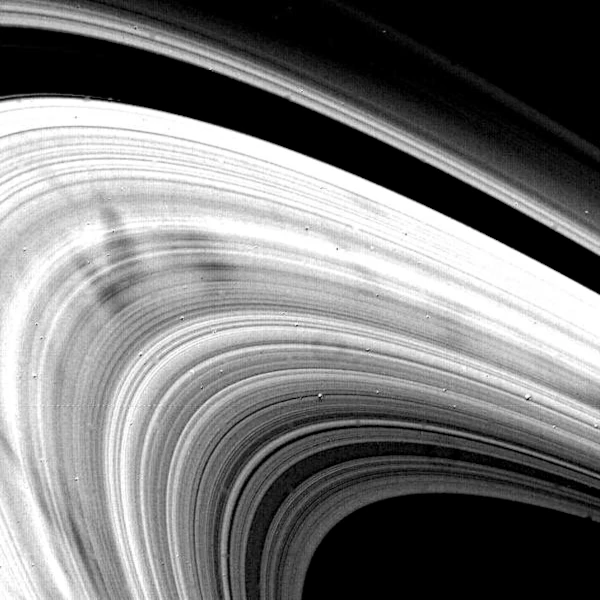
Saturn's rings are one of the most iconic structures in the solar system. First observed in 1610 by Galileo (1564-1642), these spectacular rings are primarily composed of water ice particles, with a small amount of rocks and dust. Despite their seemingly immutable appearance, recent research indicates that this ring system is actually ephemeral and could disappear in a few hundred million years. Their diameter ranges from a few micrometers to several meters. The concentration of matter is confined within the Roche Limit, where tidal forces prevent accretion into a stable satellite.
The question of the origin of the rings remains debated. Several hypotheses exist: fragmentation of a natural satellite by cometary impact, disintegration of a captured comet, or remnants of the protoplanetary disk that could not accrete into a moon due to tidal forces. Whatever their origin, the rings we observe today appear to be a temporary phenomenon on a cosmic scale.
N.B.:
The Roche limit corresponds to the minimum distance at which a body can approach a planet without being destroyed by tidal forces. For Saturn's rings, this limit prevents particles from accreting into a stable satellite, thus giving the rings their fine and persistent structure.
| Parameter | Value | Comment |
|---|---|---|
| Inner Radius (D Ring) | ≈ 66,900 km | Very close to Saturn |
| C Ring | ≈ 74,500 – 92,000 km | Bright ring, contains the Colombo Division |
| B Ring | ≈ 92,000 – 117,580 km | Densest and brightest ring, contains the Huygens Division |
| Cassini Division | ≈ 117,580 – 122,170 km | Large dark gap between B and A |
| A Ring | ≈ 122,170 – 136,775 km | Major outer ring, contains the Encke Division |
| F Ring | ≈ 140,180 – 140,700 km | Narrow and bright ring, located outside A |
| G Ring | ≈ 166,000 – 175,000 km | Weak and diffuse ring, barely visible |
| E Ring | ≈ 180,000 – 480,000 km | Very wide, low-density ring, linked to Enceladus' geysers |
| Thickness | < 1 km | Extremely thin structure |
| Total Mass | ≈ 1.5 × 1019 kg | Comparable to a medium satellite ≈ Mimas (396 km) |
| Estimated Lifespan | 100 to 200 million years | Based on Cassini data |
Source: NASA Solar System Exploration – Saturn Rings.
The complex structure of the rings results from gravitational resonances with Saturn's many moons. These resonances create visible divisions, such as the Cassini Division, and spiral structures that give the rings their characteristic appearance.
The rings undergo constant erosion by micrometeorites. Measurements from the Cassini probe showed that the rings are slowly "raining" onto Saturn, with an estimated mass loss of \( 10^{5} \) kg per second. At this rate, the rings could disappear in less than 100 million years, which is a very short time on a planetary scale.
This process is explained by the interaction between the ring particles and Saturn's magnetosphere. Under the effect of the Sun's ultraviolet radiation and micrometeorites, the ice particles become electrically charged and are drawn along the magnetic field lines toward the planet's higher latitudes.
While Saturn has the most spectacular ring system, the other gas giants (Jupiter, Uranus, and Neptune) also have rings, although much less developed. These ring systems have different characteristics and dynamics but share the same ephemeral nature on geological time scales.
| Planet | Main Composition | Width (km) | Estimated Lifespan |
|---|---|---|---|
| Saturn | Water ice (>95%) | 282,000 | 100-300 million years |
| Jupiter | Dust | 6,500 | Undetermined |
| Uranus | Ice and carbon | 9,700 | Several million years |
| Neptune | Ice and silicates | 5,100 | Very limited |
Source: NASA Solar System Exploration - Saturn and Nature Astronomy (2018).